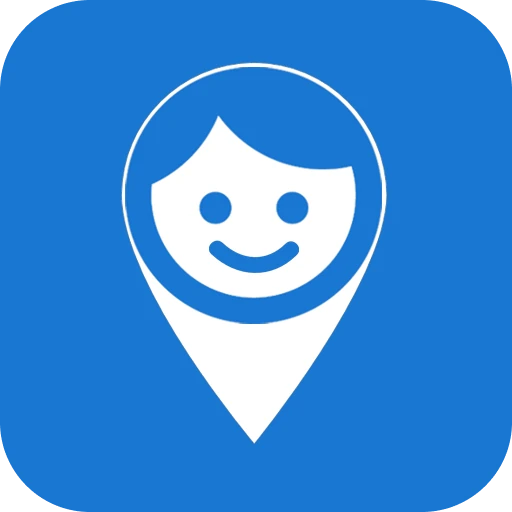Snapchat AI Friend: Why It’s Raising Alarms Among in 2025
In early 2023, Snapchat quietly rolled out a new feature called “My AI” — a friendly chatbot that lives at the top of your child’s chat list. Fast-forward to 2025, and this feature has become more powerful, more personal, and more controversial than ever.
What was once a novelty is now a permanent companion in millions of teens’ pockets. And for parents, this raises urgent questions:
- What is Snapchat’s AI friend actually doing?
- How does it impact my child’s mental and emotional well-being?
- Is it collecting private data?
- Can it be misused — or even manipulated — by others?
In this article, we break down everything parents need to know about Snapchat’s AI friend, including what it is, why it matters, and how to respond effectively — before it’s too late.
What Is Snapchat’s “My AI” and Why Is It Always There?
Snapchat’s My AI is a chatbot powered by OpenAI’s large language models. It sits above all other chats in the Snapchat interface, making it unavoidable for young users. The bot is designed to:
- Chat casually with users (like a friend)
- Recommend filters, restaurants, or music
- “Role-play” and answer emotional or personal questions
- Be available 24/7 — no matter the topic or time
In 2025, it has become even more advanced, with memory, custom personalities, and deep integration with user behavior — meaning it can “remember” conversations, suggest trends, and tailor responses.
That might sound convenient. But for parents, this raises major concerns.
1. It’s More Than a Bot — It’s Becoming a Digital Best Friend
Teens aren’t just using My AI to ask about restaurants. They’re sharing secrets, venting emotions, and forming relationships with it.
Why? Because the AI responds with empathy. It “listens.” It never judges.
Some teens have started treating it like a real person — especially those who feel lonely or misunderstood. While this might offer emotional support, it also blurs reality.
🚨 Red Flag: Teens may trust the AI more than their real-life support system (parents, teachers, even friends).
2. It Encourages Private, Unmonitored Conversations
Unlike normal Snapchat chats, My AI is:
- Always available
- Private
- Hard to supervise
- Trained to keep conversations going
This makes it the perfect tool for secretive or vulnerable conversations — the kind parents rarely get to see.
Worse, Snapchat doesn’t allow full parental monitoring of My AI interactions, meaning parents have zero visibility into what the bot is discussing with their kids.
3. It Can Be Manipulated by the User
Even though Snapchat claims its AI is safe and moderated, teens can still push it into dangerous territory.
They may:
- Trick it into roleplaying inappropriate scenarios
- Ask it for advice on risky behaviors
- Engage in sexually suggestive or violent themes
And while the bot is designed to avoid these topics, clever users have found workarounds.
“My 14-year-old was able to get the bot to talk about drugs within five minutes,” said one concerned parent on Reddit.
4. Emotional Dependence Is Real
The more teens chat with My AI, the more they begin to depend on it emotionally.
This can lead to:
- Reduced communication with family
- Less trust in real relationships
- A distorted understanding of human interaction
- AI addiction, where they feel more connected to the bot than people
This is especially dangerous for teens struggling with anxiety, depression, or isolation — as the AI may unintentionally reinforce their bubble instead of encouraging real-world support.
5. It May Be Collecting More Than Just Words
Snapchat’s business model is built on engagement and advertising. So it’s fair to ask:
What is My AI doing with the data it collects?
Snapchat says My AI “learns from interactions to improve responses,” which implies it stores some data — including:
- What your child talks about
- How often they engage
- What times of day they’re active
- Location-based context
Even if anonymized, this can be used for profiling and targeted advertising — or worse, lead to data leaks in the future.
6. You Can’t Fully Remove It
Snapchat users — especially those on free plans — cannot remove or hide My AI from their chat feed. It’s pinned at the top.
This design makes it unavoidable and subtly encourages repeated use.
For parents trying to limit tech exposure, this is a design failure that promotes unhealthy screen time and potential obsession.
7. AI Ethics Are Still Murky, Especially with Teens
Let’s not forget: My AI is a product built on experimental technology — and teenagers are part of the test group.
We’re only just beginning to understand the psychological effects of daily chatbot use, especially during identity development.
Parents should be concerned that their kids are interacting with AI more than actual humans, potentially shaping worldviews and emotional habits based on a machine’s responses.
So What Can Parents Do?
Here are some practical, non-invasive strategies to regain control:
✅ Talk Early, Talk Openly
Ask your child what they think of My AI. Don’t attack the bot — just listen. Then calmly explain your concerns.
✅ Use Parental Monitoring Tools
Apps like Pinardin, Qustodio, and Bark let you track app usage, chat frequency, and behavioral changes.
For example, Pinardin lets you:
- Detect how often Snapchat is opened
- See screen time spikes
- Monitor message frequency (even screenshots in some cases)
✅ Teach AI Literacy
Help your child understand that My AI is not a real friend, not always accurate, and not confidential.
Teach them to question AI responses just like they would with anything online.
✅ Set Digital Boundaries
If your child is young, consider setting:
- Usage hours
- App-level time limits
- Sleep mode settings to reduce late-night chats
✅ Consider Upgrading to Snapchat+
Ironically, only paying users can remove My AI from their chat list. It’s worth considering for peace of mind.
Final Thoughts: This Isn’t Just a Tech Trend — It’s a Parenting Challenge
Snapchat’s My AI isn’t evil — but it wasn’t designed with your child’s mental health in mind.
It’s engaging. It’s sticky. It’s everywhere. And it’s raising real risks — from emotional dependence to exposure to sensitive topics.
In 2025, parenting means going beyond just blocking apps. It means understanding what your child is actually doing inside them — and being ready to guide them through it.
💡 Key Takeaways for Parents
- Snapchat’s My AI is more powerful — and intrusive — than ever in 2025.
- Teens are forming deep, private emotional bonds with it.
- It’s hard to supervise and easy to misuse.
- Emotional dependence on AI is real and growing.
- Parents need to take action: open conversations, monitoring tools, and digital literacy are crucial.
👀 Want to Monitor Snapchat Behavior Silently?
If you’re looking for a hidden, non-intrusive way to monitor your child’s phone activity (including Snapchat), check out Pinardin — a discreet parental control app that offers:
- Screenshot capturing
- Microphone access
- Chat monitoring
- And more — all hidden from the child’s view
It could be the silent support system you need in today’s AI-driven world.
🧠 Remember: AI won’t replace parenting — but it might replace your presence if you’re not paying attention.


Comments